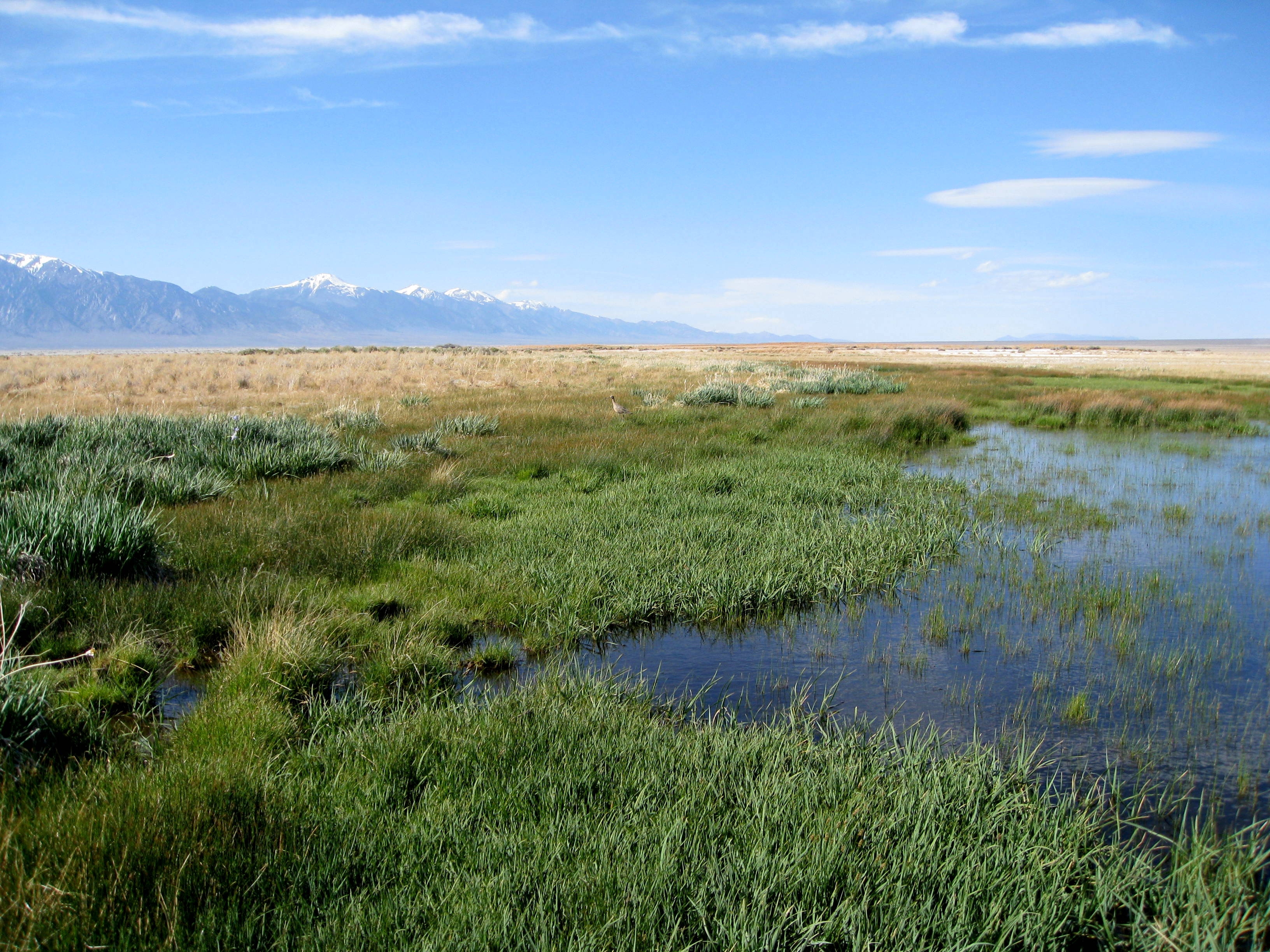Nevada
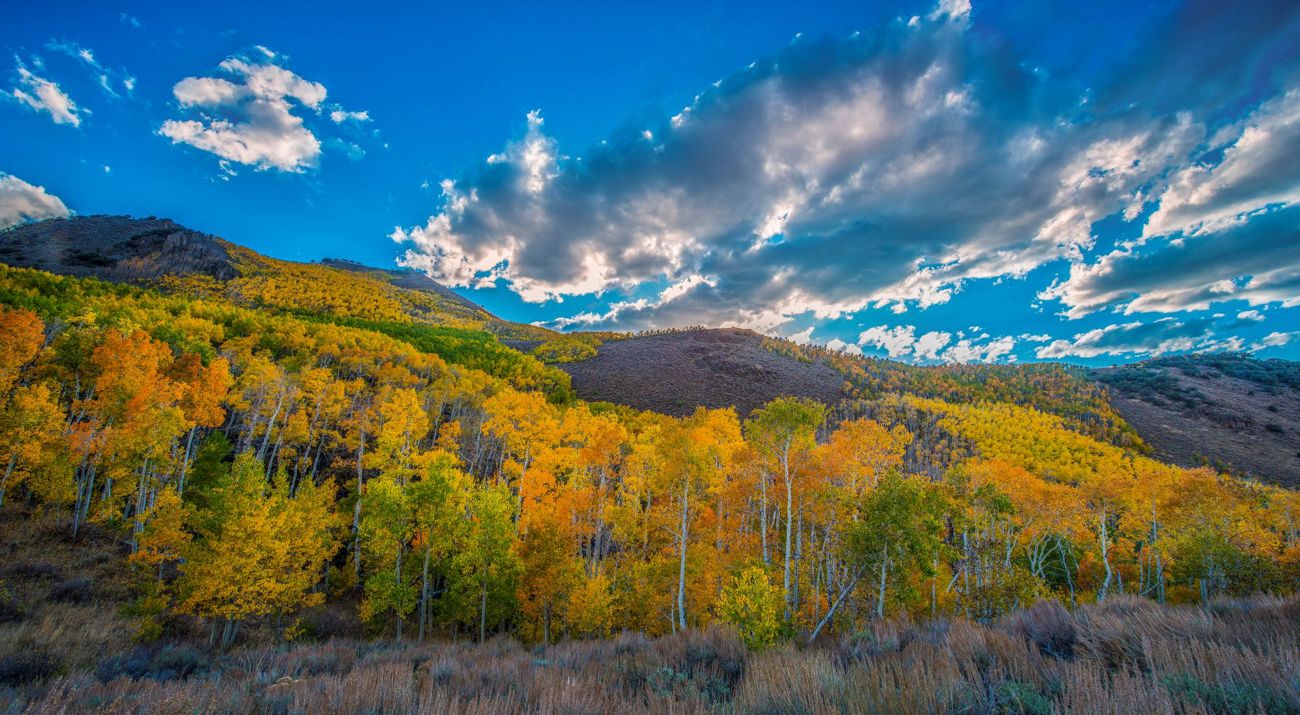
Nevada’s Resilient Waters Initiative
Nevada is the driest state in the United States, but is fortunate to have groundwater as a buffer for droughts, climate change and water for people and ecosystems. TNC Nevada is working toward water security for the state’s critical freshwater systems.
Nevada is the driest state in the United States, so water is often a limiting resource for our people and ecosystems. The average annual precipitation across the state is 9.5 inches (~240 mm), but many parts of Nevada average 4 inches (100 mm) or less in precipitation each year. Thousands of springs, wetlands, and other groundwater-dependent ecosystems (GDEs) throughout the state provide evidence of the connections between groundwater, surface water, and terrestrial landscapes. GDEs are natural communities including plants, animals, and microbes that rely on groundwater for all or part of their water needs. Groundwater is water that is stored below the ground surface, and it provides a buffer to ecosystems and water supplies during dry periods, and critical habitat for rare and endemic species found only in Nevada. In addition to being essential places for Nevada’s terrestrial and aquatic species, GDEs benefit human well-being by providing water storage and purification, soil preservation, carbon storage, and recreational activities, and having cultural importance.
The aim of TNC-Nevada’s Resilient Waters Initiative is to ensure water security for critical freshwater systems by protecting and restoring critical freshwater and groundwater dependent habitats and species, developing the science to inform sustainability planning, developing multi-benefit approaches that will provide solutions in over-appropriated groundwater basins, and developing efficient and effective restoration approaches. Our Sustainable Waters Strategy aims to ensure reliable water supplies for priority groundwater-dependent ecosystems and species in Nevada and enhance their resilience in a changing climate.
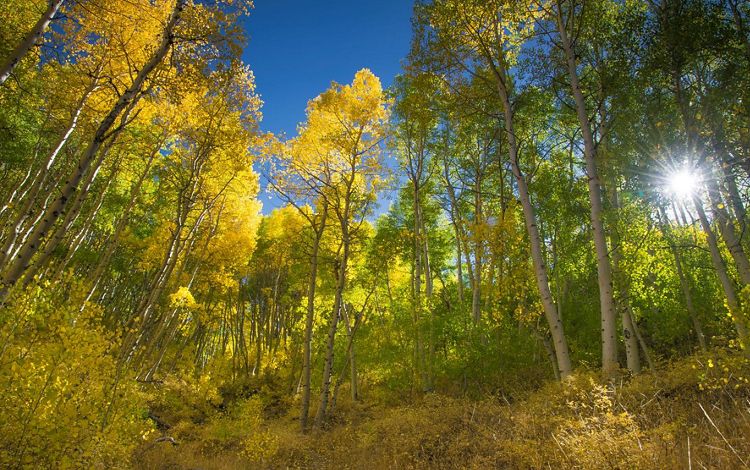

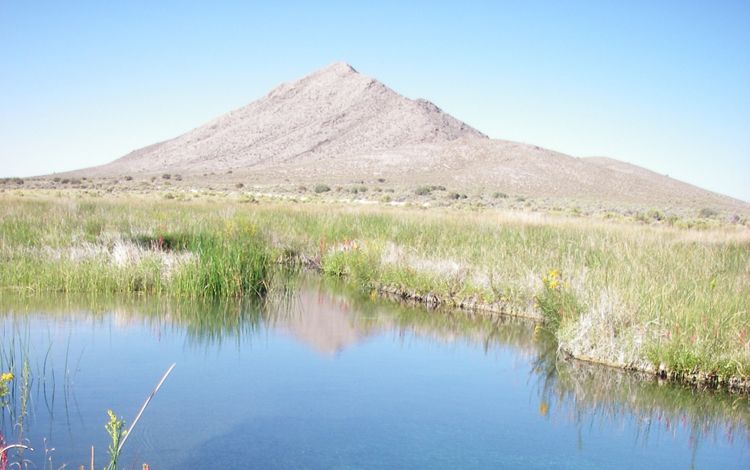

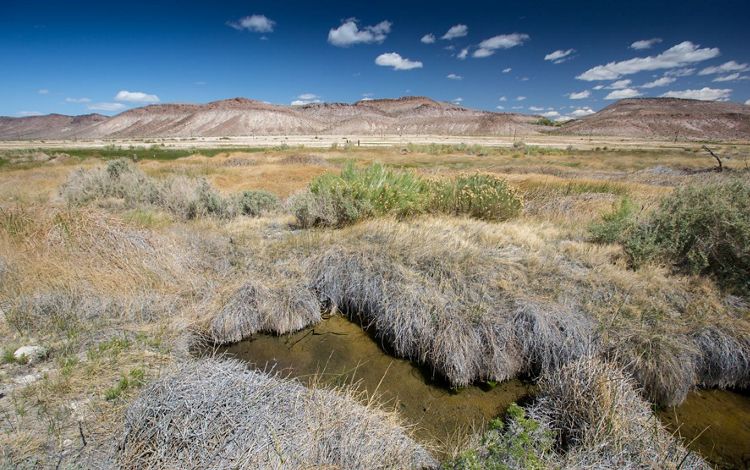
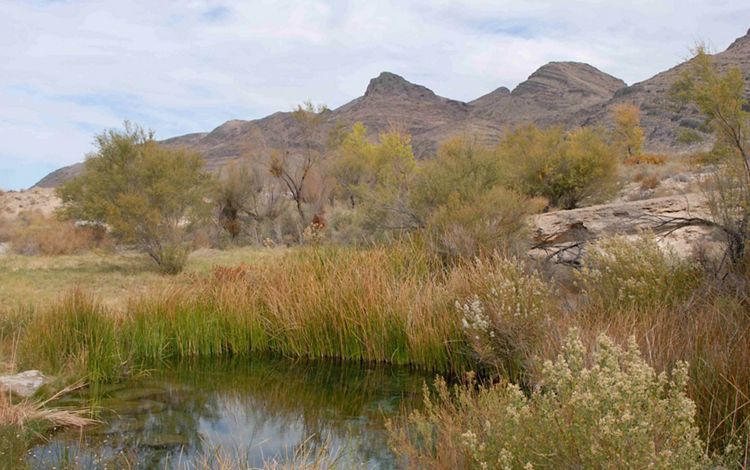


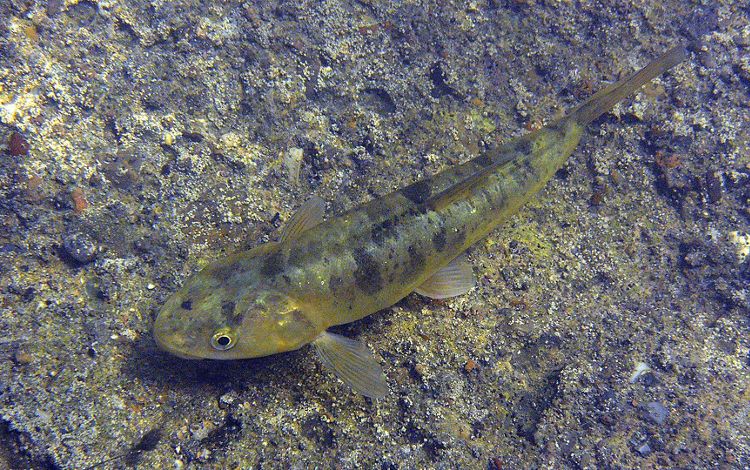











Tools
-
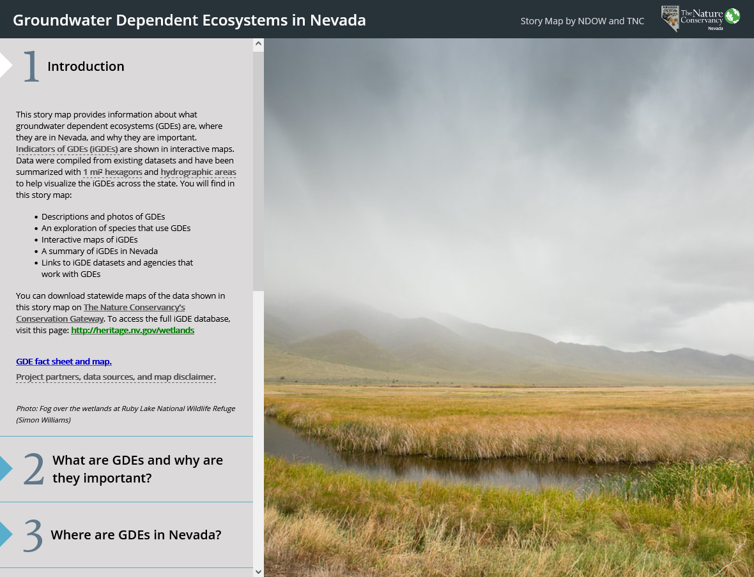
Nevada iGDE Story Map
This story map provides information about what groundwater dependent ecosystems (GDEs) are, where they are in Nevada, and why they are important. Access the story map here
-

Groundwater Level Statistical Results (1984-2021)
This map tool is for viewing groundwater level statistical results for wells in Nevada for 1984-2021. This tool accompanies the state-wide assessment of stressors and threats to Nevada groundwater dependent ecosystems. Access the tool here
-
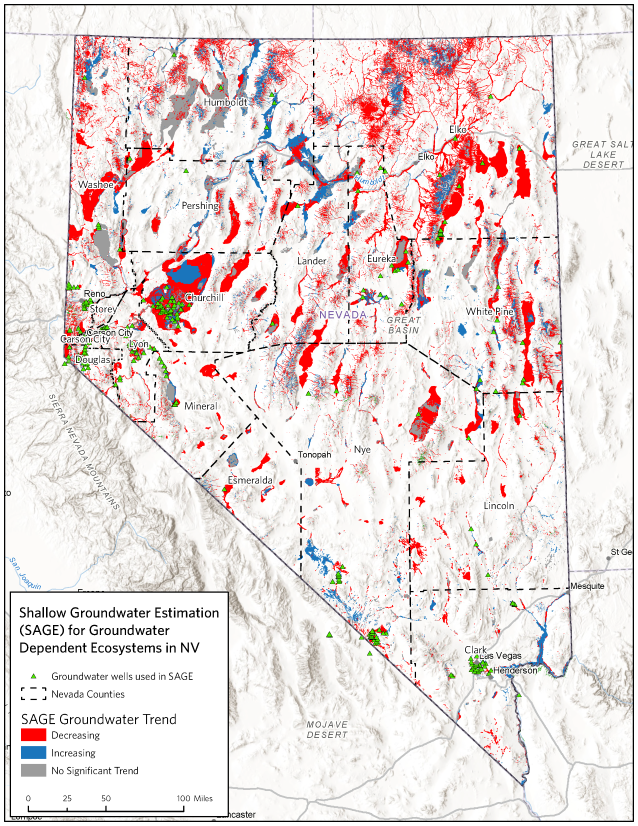
Shallow Groundwater Estimation (SAGE)
This tool estimates groundwater table trends at places without groundwater data using remote sensing data, climate data, and observed groundwater table depths. Find code and methods report here
Reports
-
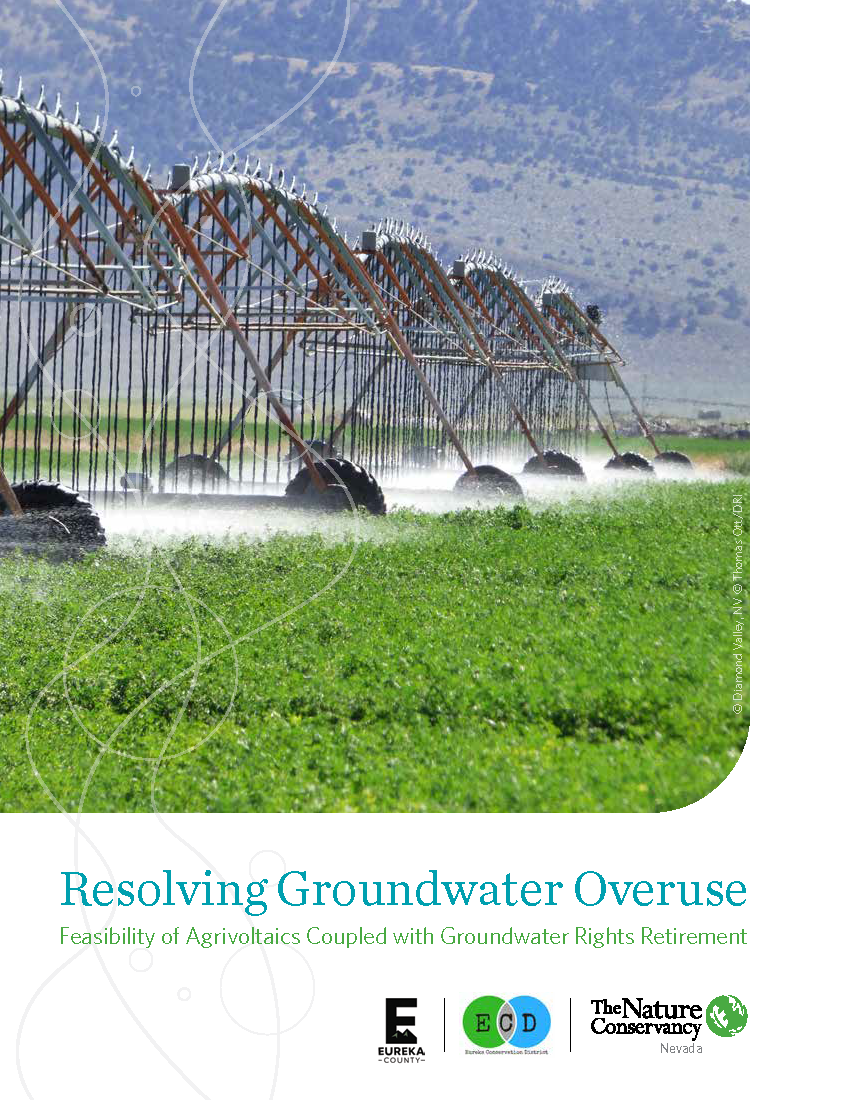
Groundwater rights retirement and agrivoltaics
This report provides results of a study of the feasibility of retiring groundwater rights and transitioning land to agrivoltaics in Diamond Valley, NV. Find out more here
Download -
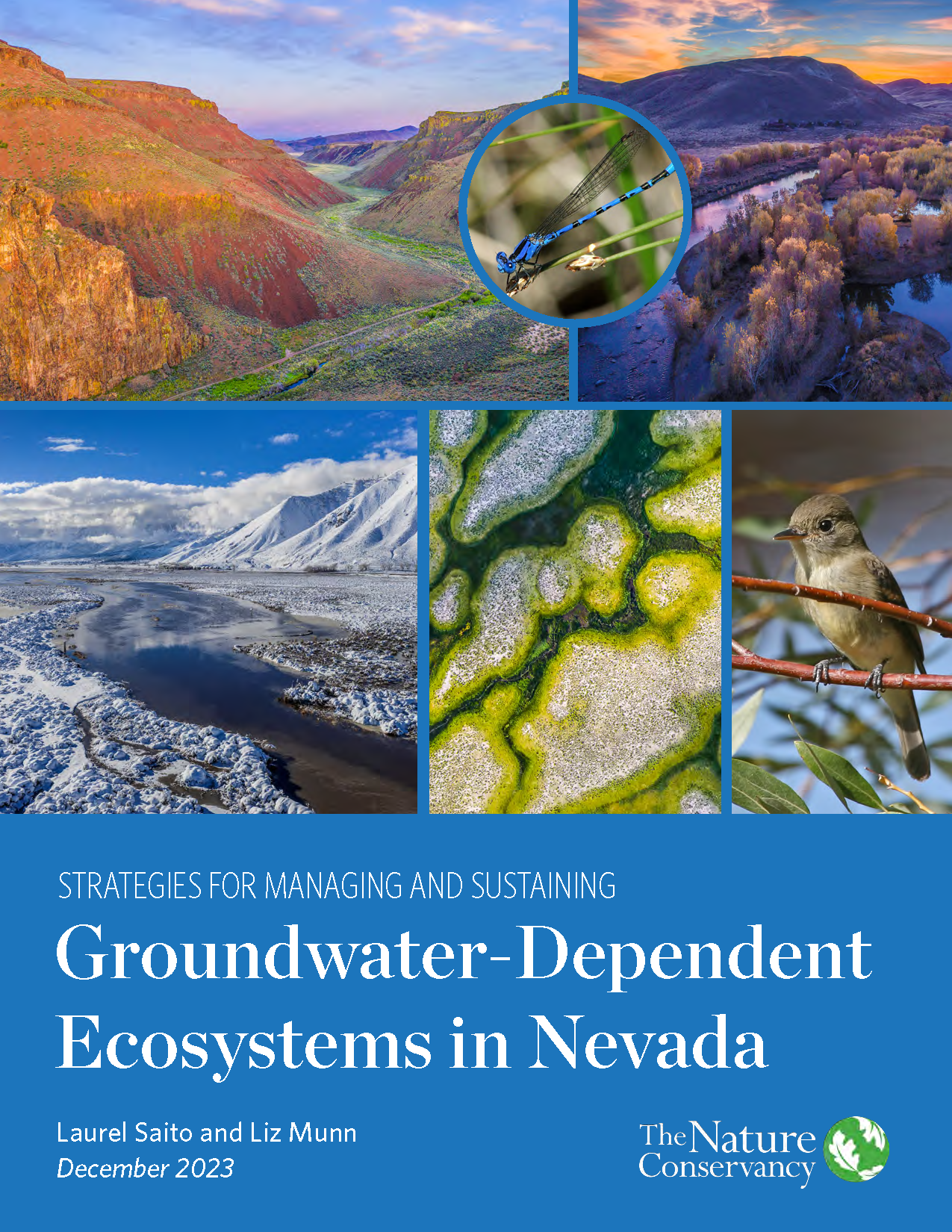
Strategies for Managing and Sustaining GDEs in NV
This report presents 10 strategies for managing and sustaining GDEs in Nevada. Download report here or find out more about this report here
Download -

Assessment of Stressors and Threats to Nevada GDEs
This report describes the state-wide assessment of stressors and threats to Nevada groundwater dependent ecosystems. Download Fact Sheet here or find out more about this report here
Download -

Groundwater Thresholds for Ecosystems: A Guide
This publication presents a practicable approach for quantifying groundwater conditions that are protective of GDEs. This document highlights five steps to quantify what groundwater levels are needed to avoid adverse impacts from groundwater use on GDEs.
Download -
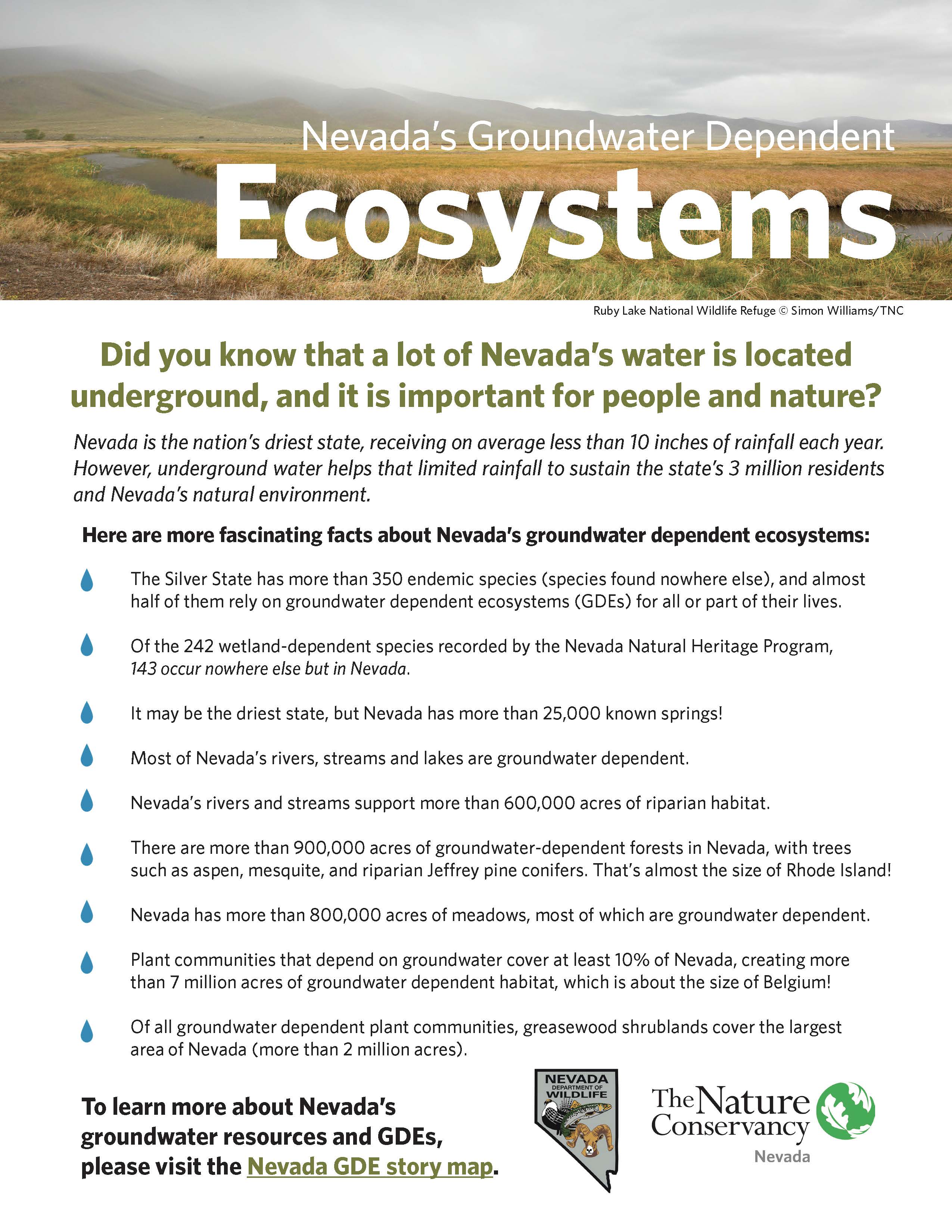
Fact Sheet for Nevada iGDE Database and Story Map
This fact sheet summarizes the Nevada iGDE database and story map.
Download -
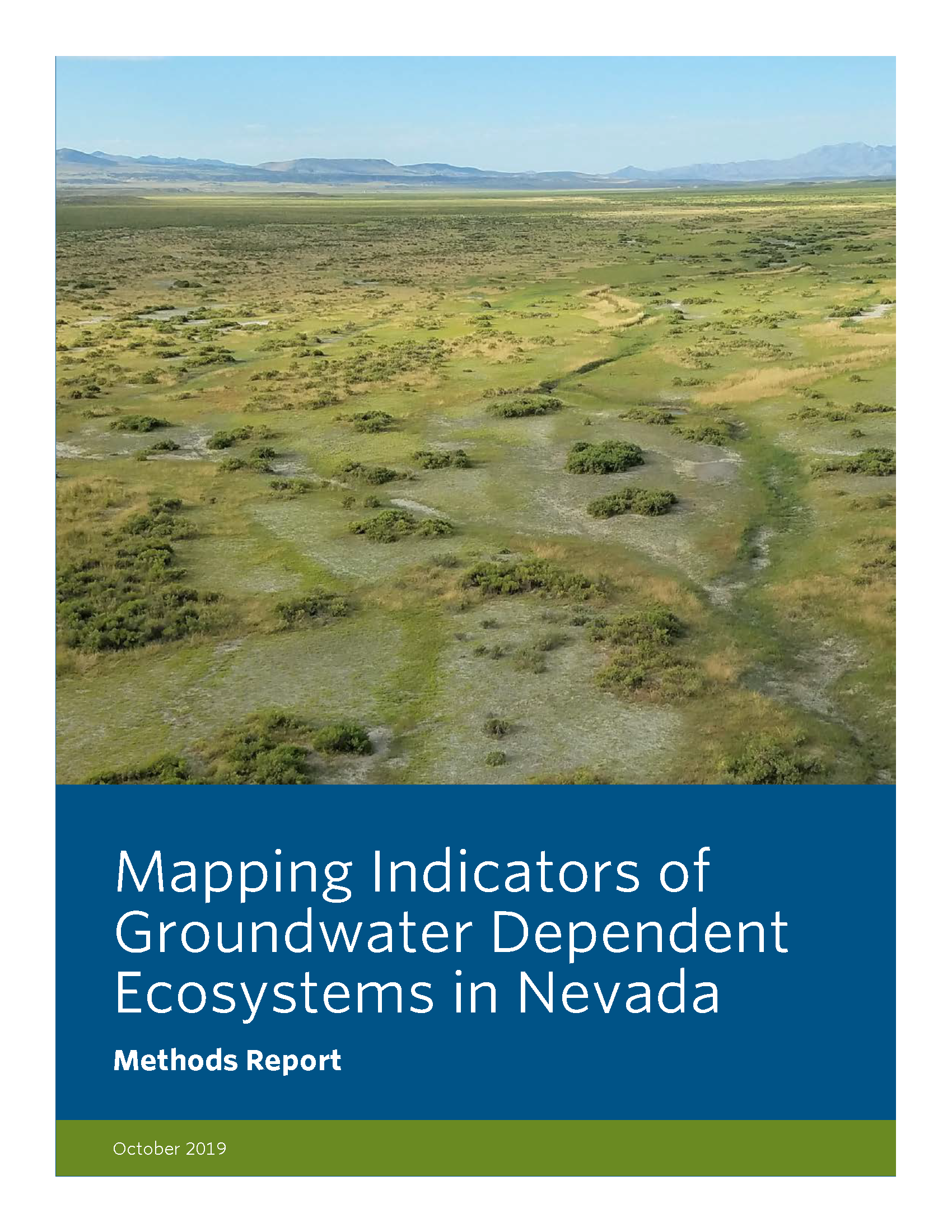
Nevada iGDE Database Methods Report
This report describes the methods for assembling the Nevada Indicators of Groundwater Dependent Ecosystems Database and story map
Download -
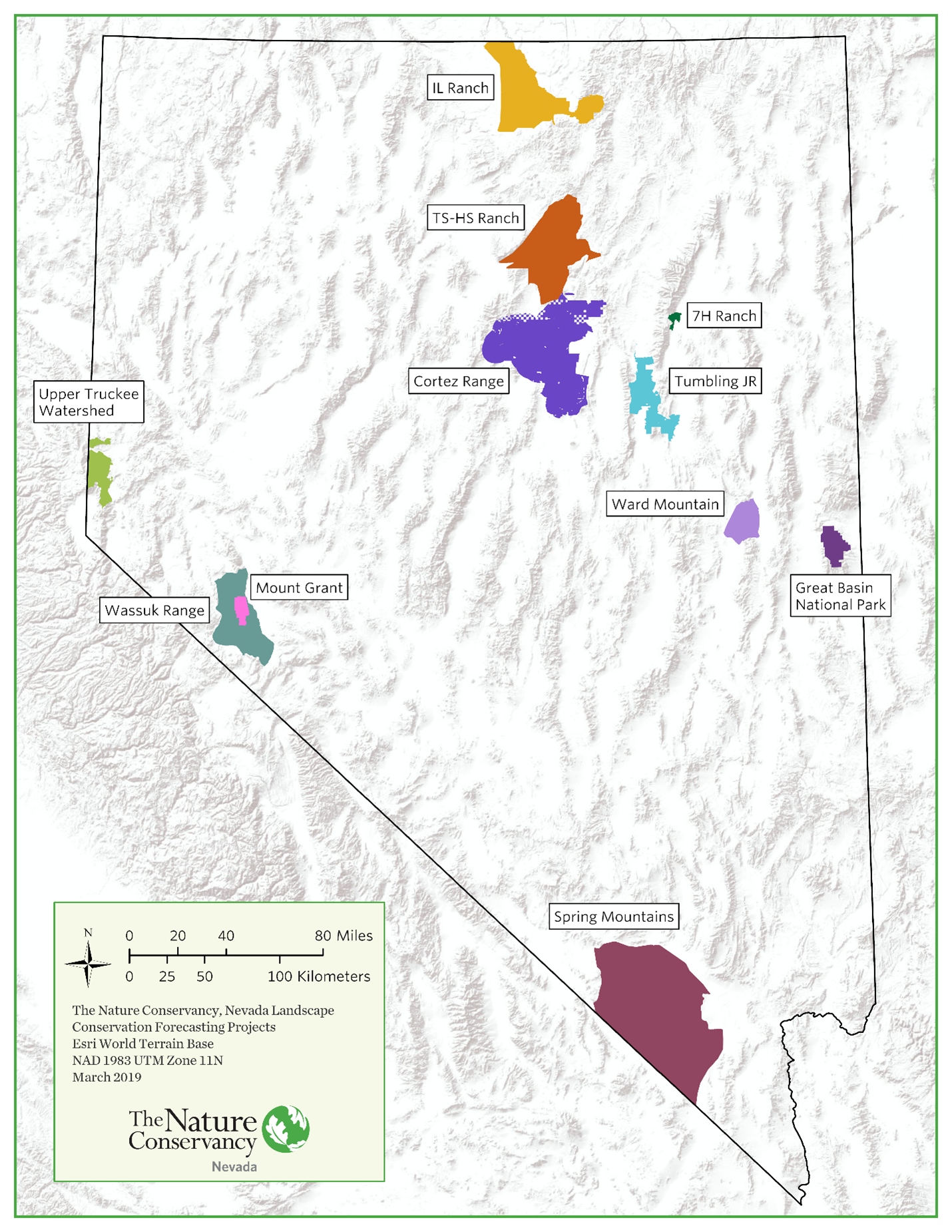
Ecological departure of TNC-mapped GDEs in Nevada
This report presents the analysis of ecological departure of groundwater dependent ecosystems in over 1,600,000 hectares (4 million acres) that have been mapped by The Nature Conservancy in Nevada in the Sierra Nevada, Columbia Plateau, Great Basin and Mojave ecoregions.
Download
Literature
-

Strategies to address risks to GDEs
Saito L, Byer S, Munn L, Badik K, Provencher L, McEvoy DJ, Rohde MM. 2025. Strategies to address risks to groundwater dependent ecosystems. Hydrological Processes 39:e70229l
Download -

Retiring Groundwater Rights and Agrivoltaics
Saito L, Tibbitts J, Gower P, Zimmerman G, McHugh D. 2025. Rethinking water scarcity, energy, and agriculture: Coupling agrivoltaics with addressing groundwater depletion. Journal of the American Water Resources Association 61(2):e70021.
Download -
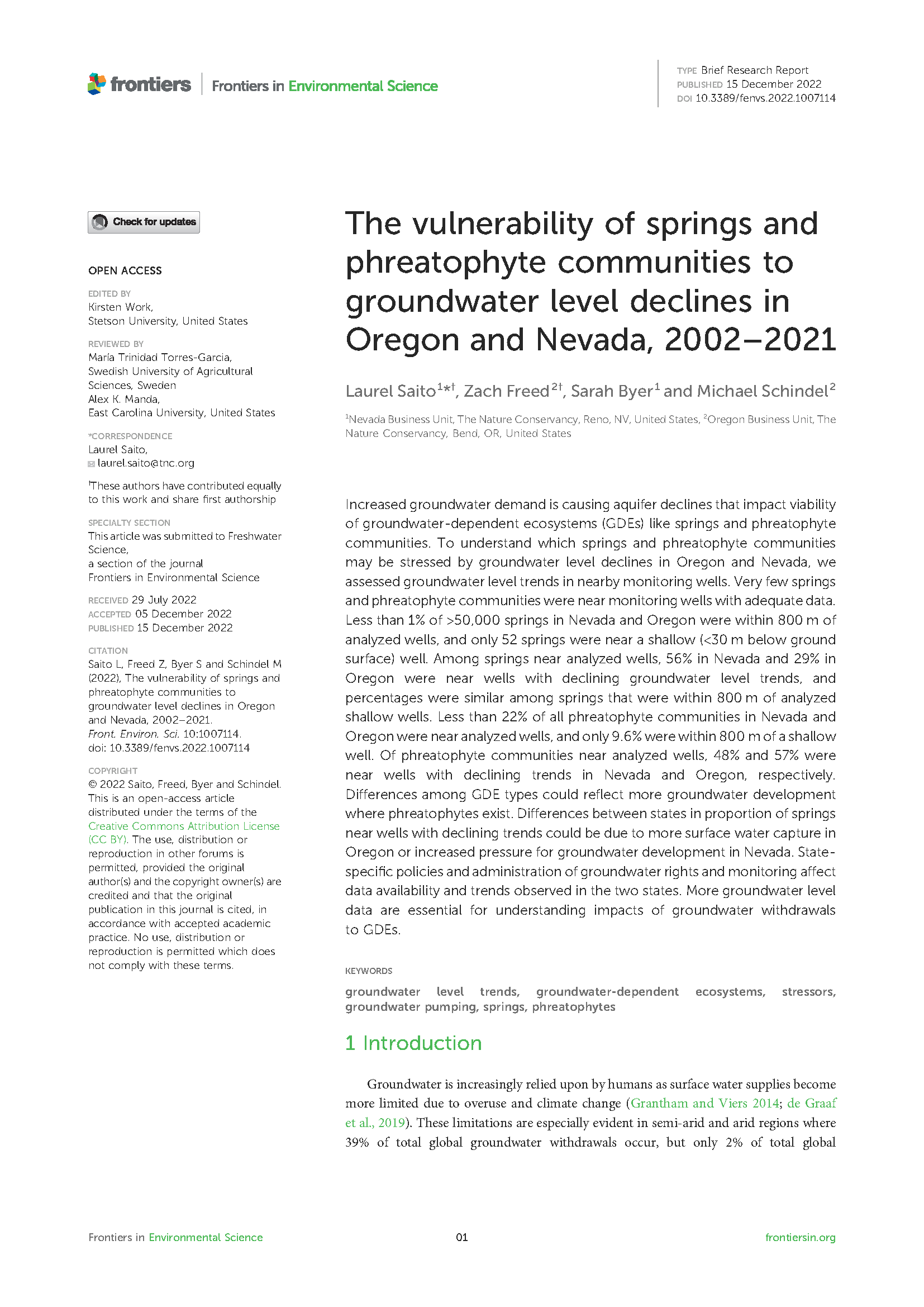
Springs & Phreatophyte Communities in OR & NV
Saito L, Freed Z, Byer S, Schindel M. 2022. The vulnerability of springs and phreatophyte communities to groundwater level declines in Oregon and Nevada, 2002-2021. Frontiers in Environmental Science 10:1007114
Download -
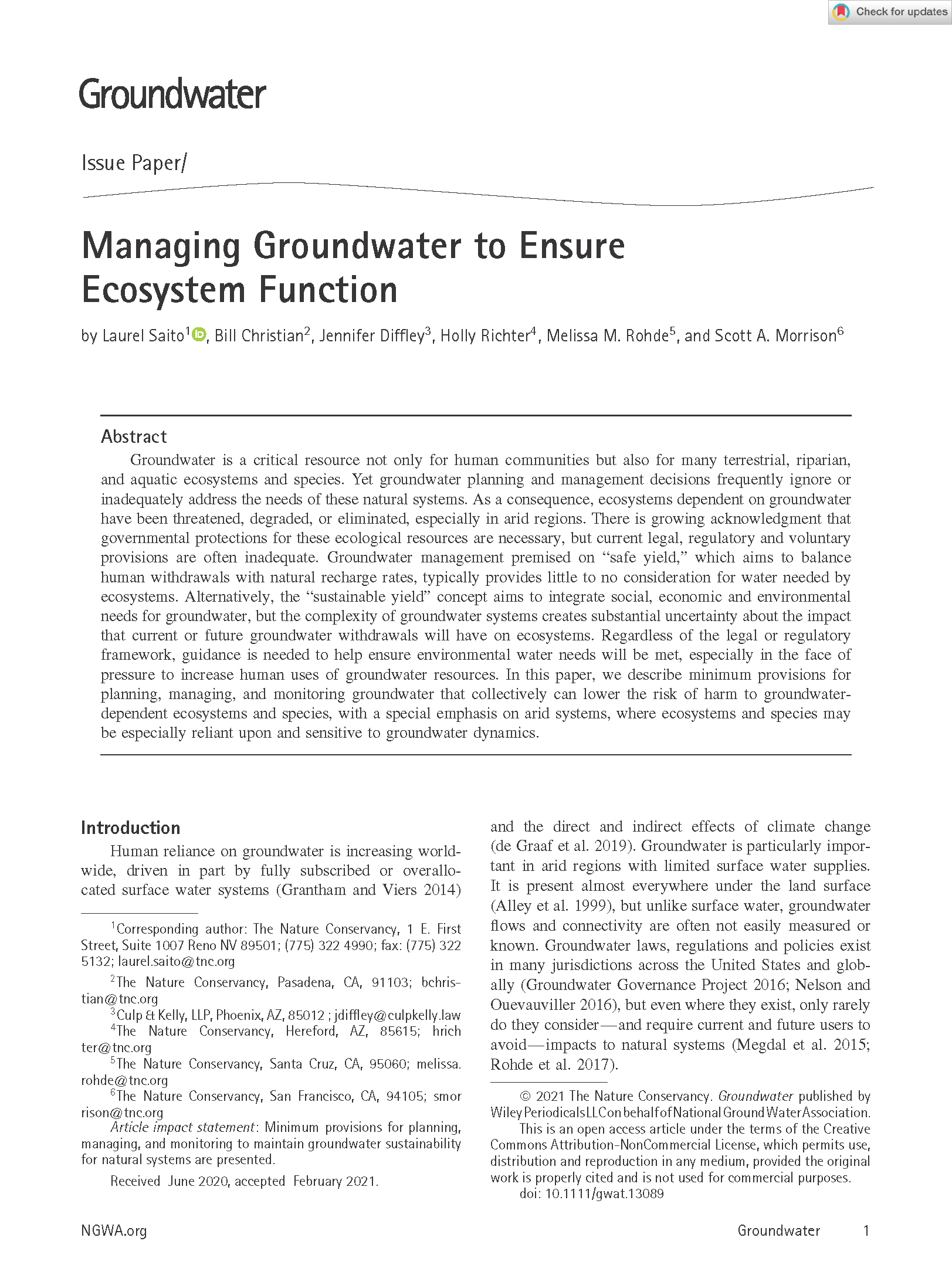
Managing Groundwater to Ensure Ecosystem Function
Saito L, Christian B, Diffley J, Richter H, Rohde MM, Morrison SA. 2021. Managing groundwater to ensure ecosystem function. Groundwater 59(3):322-333.
Download -
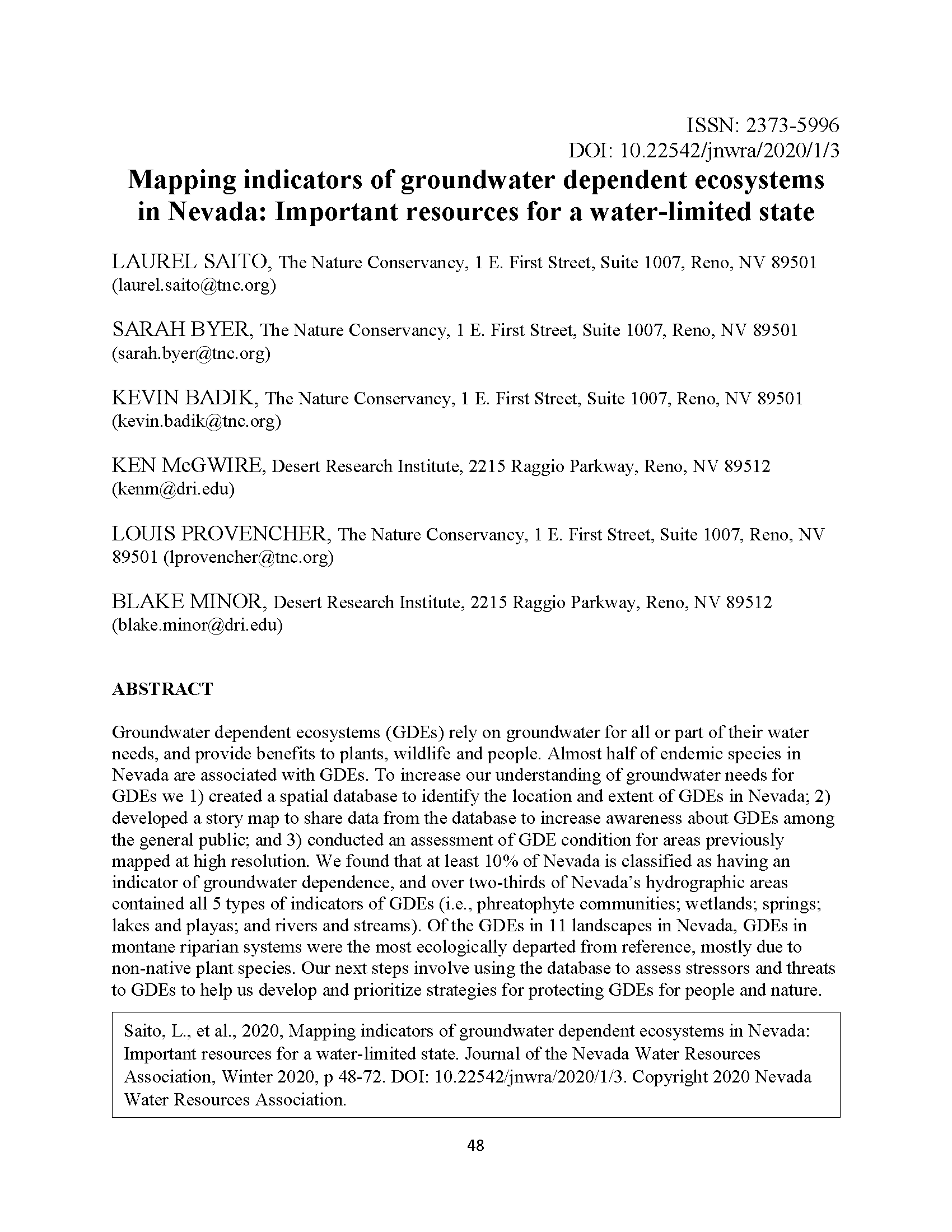
Mapping indicators of GDEs in Nevada
Saito L, Byer S, Badik K, McGwire K, Provencher L, Minor B. 2020. Mapping indicators of groundwater dependent ecosystems in Nevada: Important resources for a water-limited state. Journal of the Nevada Water Resources Association, Winter 2020. pp. 48-72
Download -
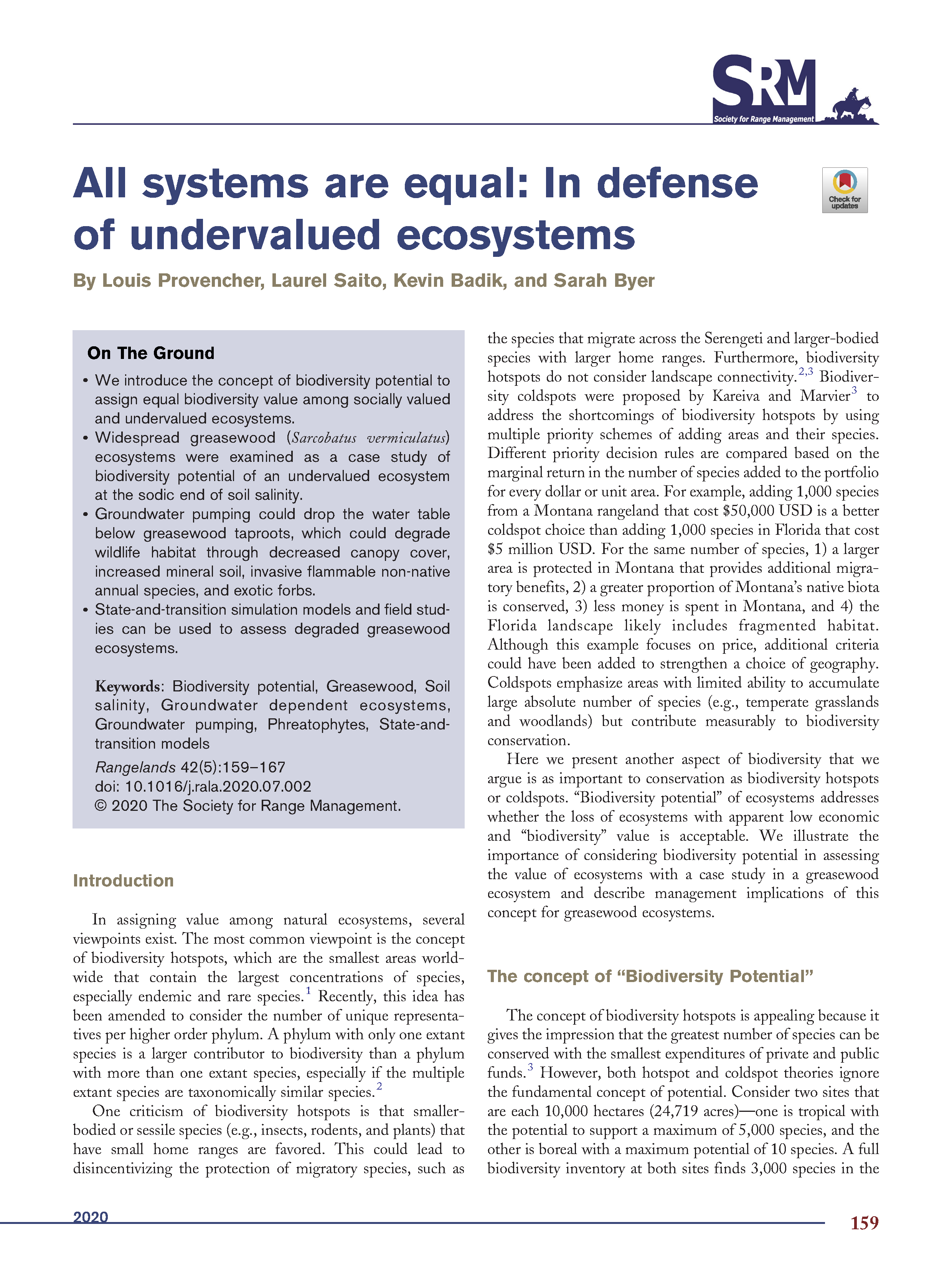
Valuing Undervalued Ecosystems: Greasewood
Provencher L, Saito L, Badik K, Byer S. 2020. All systems are equal: In defense of undervalued ecosystems. Rangelands 42(5): 159-167.
Download
Nevada Groundwater Resources
-
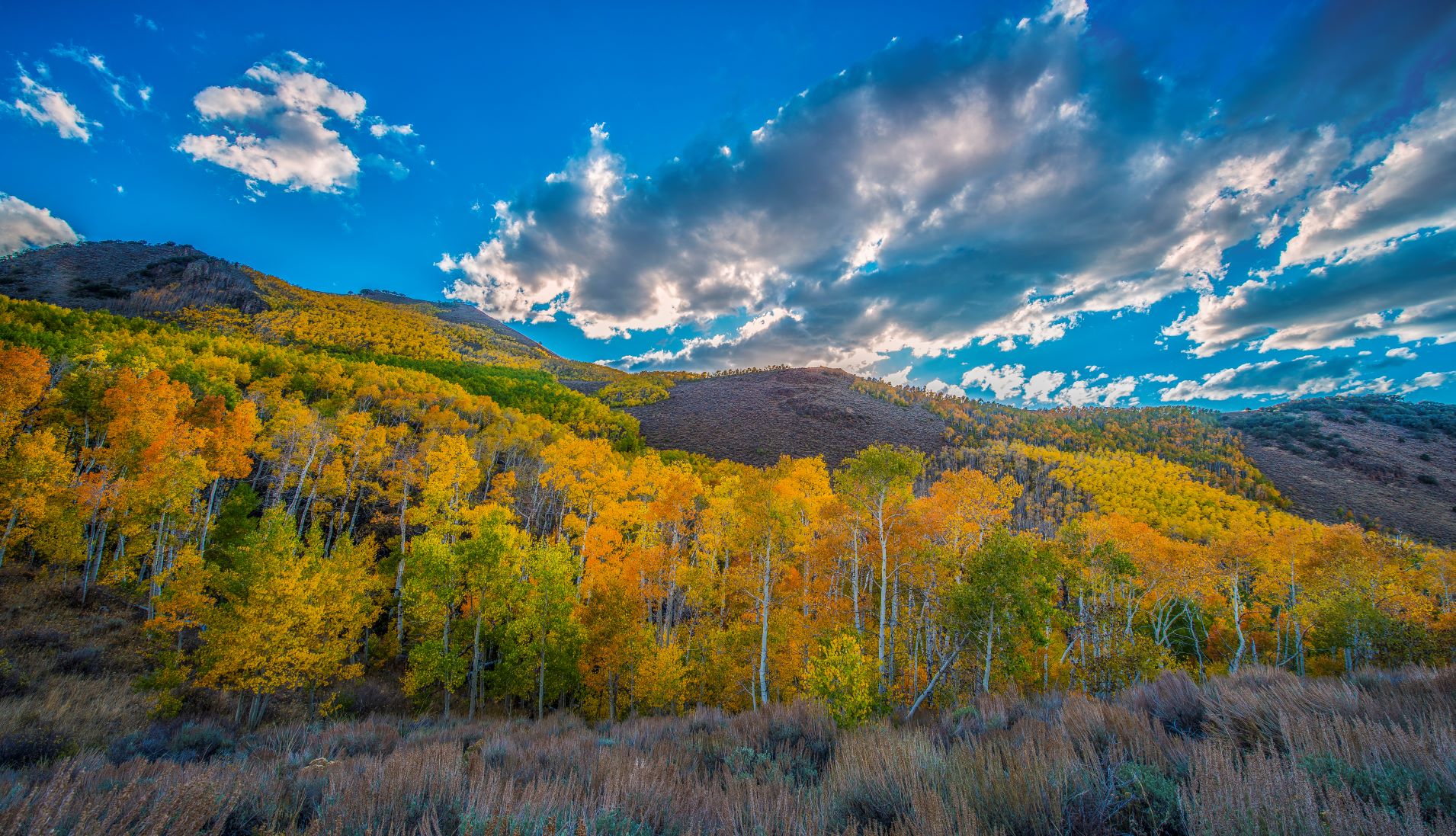
Nevada's Groundwater-Dependent Ecosystems
Learn more about Nevada's groundwater-dependent ecosystems in this 2-pager. Download
-
-

-

Groundwater Dependent Ecosystem Assessments at DRI
Desert Research Institute website for groundwater dependent ecosystems assessments for The Nature Conservancy and others. Click here
-
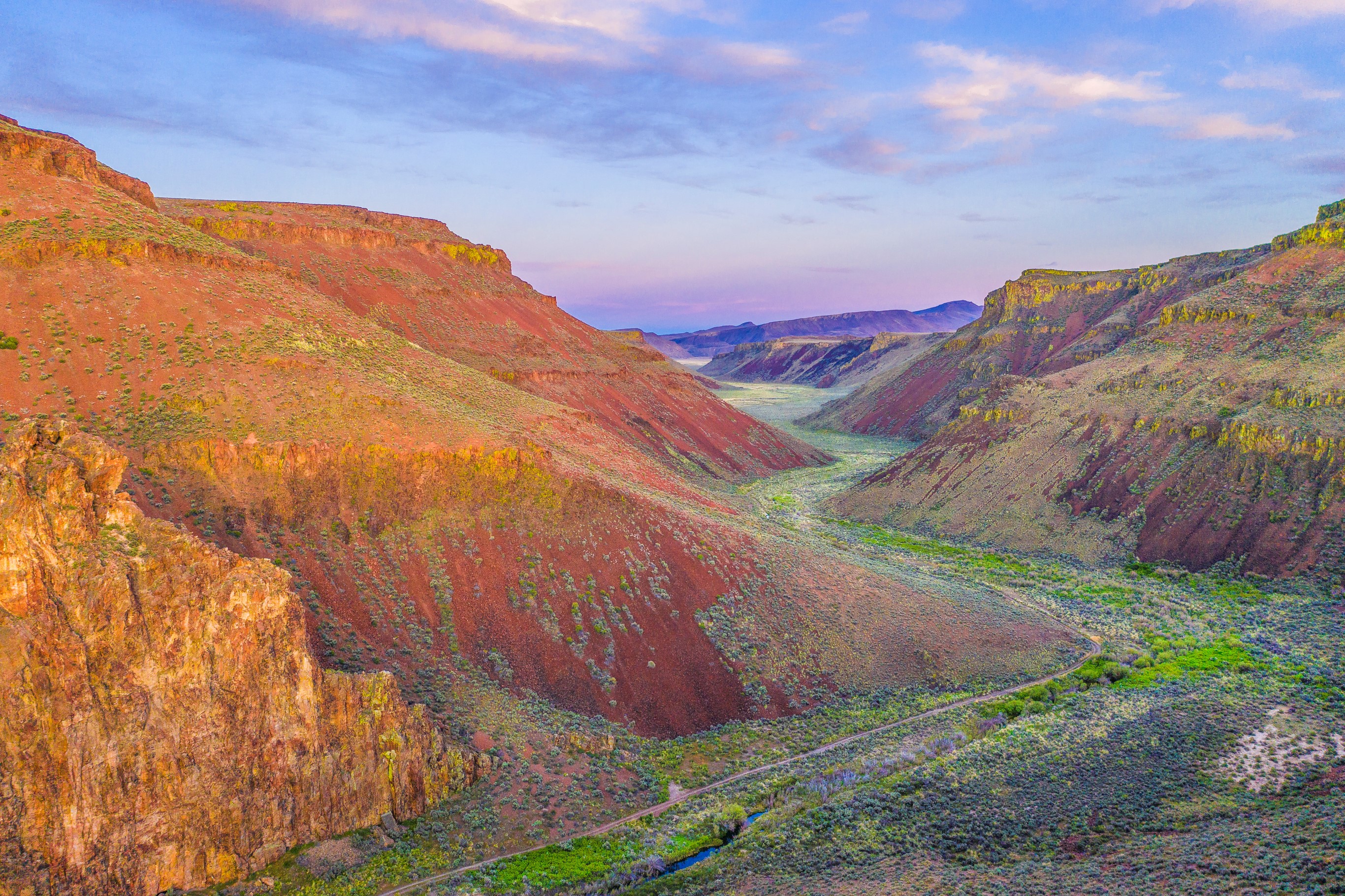
Nevada GDE Conservation Gateway Page
Additional resources are posted on the TNC-NV Conservation Gateway page Click here
If you have questions or comments about anything you see here on the Groundwater Resource Hub, please send an email to gwrhubcontactus@tnc.org, or contact any of our staff listed below.
Laurel Saito
Nevada Water Strategy Director
laurel.saito@tnc.org
Sarah Byer
Spatial Analyst
sarah.byer@tnc.org
